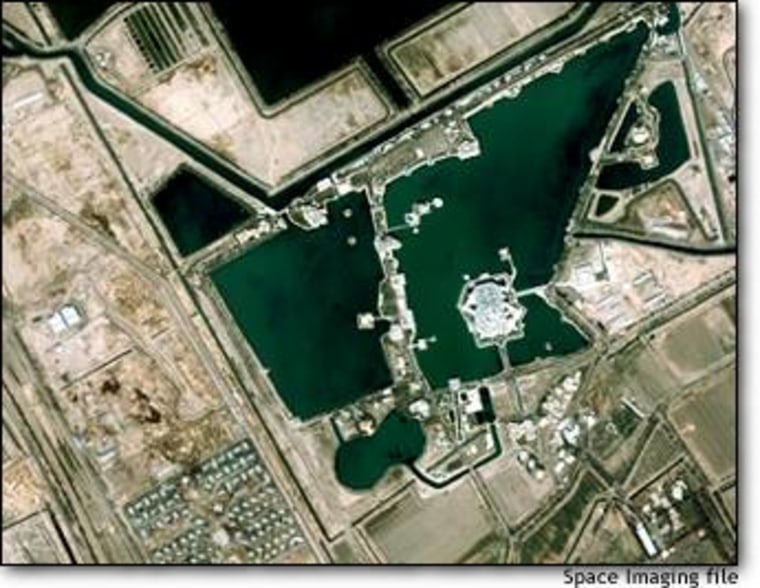Do you need a detailed picture of something on the ground just about anywhere on the earth? There are now a handful of private satellite imaging companies that can probably supply it — for a price.
For military planners, and anyone who followed the news of war in Afghanistan, some of the most dramatic images weren’t taken on the ground. High-resolution images from space documented the destruction of key sites like Kandahar airport, helping both Pentagon strategists and nightly news viewers follow the war’s progress.
Some of those pictures were taken by Space Imaging, based in Thornton, Colo., and one of several private firms that take and analyze high-resolution satellite images. And business is booming.
“The industry is still in its infancy,” said John Coppel, Space Imaging’s CEO. “We haven’t reached a maturity cycle by any means. We’re still in a growth phase.”
It’s actually more like a race.
“Satellite technology available to the public has increased dramatically in the last decade,” said Corey Hinderstein, a senior analyst at the Institute for Science and International Security.
“There are now two satellite systems up that have a resolution better than 1 meter, which means they can see images of objects that are 1 meter in diameter or length.”
Space Imaging’s satellite Ikonos can see 1 meter images, and in 1999, when it was launched, it was the only one. So last year, during the mission in Afghanistan the federal government came knocking.
“During (Operation) Enduring Freedom,” said Coppel, “Space Imaging was under contract to the National Imagery and Mapping Agency to provide Ikonos satellite coverage of Afghanistan.”
Battlefields transformed
For American troops, those maps transformed the battlefield, according to Dr. Ashton Carter served as the assistant secretary of defense for international security policy in the late nineties.

“One of the several key strengths of the U.S. military — which no other military in the world can replicate — is our ability to surveil the battlefield and know what is going on everywhere,” he said. “That is an aspiration that soldiers have had for time immemorial, and for this generation our soldiers can largely have that aspiration satisfied.”
Space Imagining isn’t the only company trying to satisfy those aspirations. Pictures of construction sites in Iran that may be used to develop nuclear weapons were taken by QuickBird, a satellite owned by another private company, DigitalGlobe, of Longmont, Colo.
“The images from the QuickBird satellite have only been available this year,” said Hinderstein. “Their image quality is extremely good, and because of the ability to overlay color images of a slightly coarser resolution you can actually get real color images of about six-tenths of a meter.”
At Space Imaging the pressure is on to catch up. Over 400 miles above the company’s earth station, the Ikonos satellite glides by at a speed of about 17,000 miles per hour. And in 2005 Space Imaging has plans for that satellite to have company.
“As soon as we launched Ikonos,” said Coppel, “we had to start thinking about our next-generation system. And so we filed a license application to have a half-meter resolution system.
Space Imaging is still raising capital for that new satellite. Being a player at this level of space technology isn’t cheap. There are only a few in the world that are in the 1-meter resolution class, and they have big backers. Lockheed Martin and Raytheon are major Space Imaging investors. DigitalGlobe has sold stakes to Ball Aerospace and ITT Industries. Still, projects wither on the vine.
“The barriers to entry are very high in this market,” said Coppel. “You have to build a satellite, you have to come up with all the ground facilities to operate the satellite, you have to launch it successfully. This is not for the faint of heart when you regard investments.”
Still, development continues at a breakneck speed. And so long as global conflicts continue to simmer, America will use commercial satellites to bring the world into focus.
“Space is an important part of the American way of waging war,” said Carter. “And we will continue to invest in space — not just for counterterrorism purposes but for general military purposes. It’s a key advantage that we have as a military.”